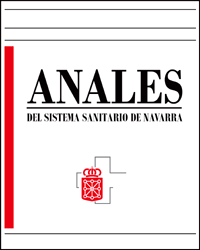Septic thrombophlebitis of the portal vein (pylephlebitis): diagnosis and management of three cases
Keywords:
Pileflebitis. Tromboflebitis séptica. Vena porta. Tomografía computarizada. Ecografía.Abstract
Background. Pylephlebitis is thrombophlebitis of the portal vein and/or of its branches; it is acute and generally arises as a complication of inflammatory intra-abdominal processes or of surgical interventions in patients with blood discrasies. As its clinical picture is fairly non-specific, radiological findings, while not pathognomonic, are of great use in early diagnosis and improved vital prognosis of these patients. The aims of this study are to review the pathophysiology of this entity and its clinical and radiological presentation, which allow for early clinical suspicion. Clinical cases. Three cases of pylephlebitis are presented, two of them post-surgical, in which the only common clinical data for suspicion were the febricula and leucocytosis. Diagnosis was obtained from the finding of helicoidal computer tomography with IV contrast – Somaton Siemens – and abdominal echography – Ellegra Siemens – carried out on the three. The result of these tests was decisive for an early diagnosis, efficient treatment and satisfactory evolution in the three cases. Discussion. We wish to emphasize the importance of clinical suspicion and early radiology for an early diagnosis of this entity, which make it possible to establish an efficient treatment.Downloads
Downloads
Published
How to Cite
Issue
Section
License
La revista Anales del Sistema Sanitario de Navarra es publicada por el Departamento de Salud del Gobierno de Navarra (España), quien conserva los derechos patrimoniales (copyright ) sobre el artículo publicado y favorece y permite la difusión del mismo bajo licencia Creative Commons Reconocimiento-CompartirIgual 4.0 Internacional (CC BY-SA 4.0). Esta licencia permite copiar, usar, difundir, transmitir y exponer públicamente el artículo, siempre que siempre que se cite la autoría y la publicación inicial en Anales del Sistema Sanitario de Navarra, y se distinga la existencia de esta licencia de uso.








